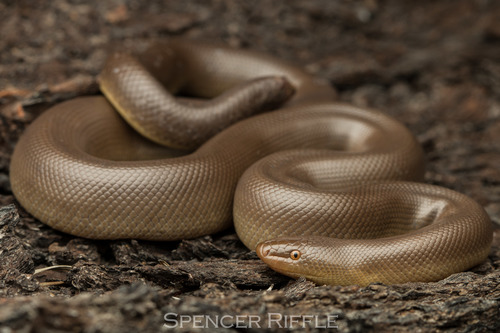
Rubber Boa
The Rubber Boa (Charina bottae) boasts smooth, rubbery skin and a distinctively blunt tail. Inhabiting cool, moist North American habitats, it uses its tail to mimic its head, confusing predators. As a nocturnal hunter, it helps manage small mammal populations, integral to its ecosystem.
12-25 years
Lifespan
Length: 36 - 84 cm
Size
Brown, Yellow
Color
Least Concern
Conservation Status
Stable
Population Trend
Characteristics
Known as the Rubber Boa, Charina bottae is a small, non-venomous snake found in North America. It prefers cool, moist environments such as forests and grasslands. This species is notable for its smooth, rubbery skin and blunt tail, which it uses as a decoy to protect its head from predators. The Rubber Boa is a slow-moving, nocturnal snake that preys on small mammals and birds, playing a crucial role in controlling pest populations.
Distribution Range of the Rubber Boa
Charina bottae, commonly known as the Rubber Boa, is native to western North America. Its geographical distribution includes the western United States and parts of southwestern Canada. In the United States, it is found in states such as California, Oregon, Washington, Idaho, Montana, Wyoming, Utah, Nevada, and Colorado. In Canada, it is present in British Columbia.
Rubber Boa's Habitat
Environmental Conditions
The Rubber Boa typically inhabits cool, moist environments. It is commonly found in forested areas, particularly coniferous forests, but can also be seen in grasslands, shrublands, and near water bodies. The species prefers habitats with loose, well-drained soils that allow for burrowing.
Ecological Niche
Charina bottae is a fossorial snake, meaning it spends much of its time underground. Its ecological niche includes controlling populations of small mammals and invertebrates, which form a significant part of its diet. The species is adapted to cooler climates and is often active during the evening or night to avoid higher daytime temperatures.
Copyright @ Nature Style Limited. All Rights Reserved.
 English
English